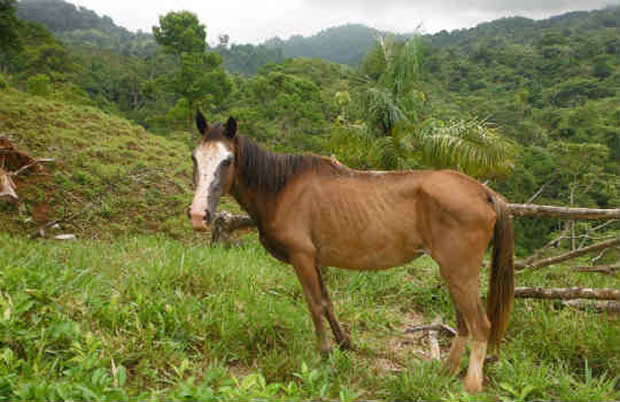
Horseytalk.net Special Interview
Alana Chapman
British charity start work with an indigenous tribe in Costa Rica
to improve horse welfare
The Guaymi Indigenous Reserve is in southern Costa Rica, and is home to an indigenous tribe who have inhabited the reserve for centuries.

The tribal communities rely heavily on horses to provide transportation around the reserve as there are no real roads and any paths are steep and winding, making them inaccessible to any vehicle. The communities make their own clothes and grow their own food but they need horses to help fetch materials from near-by towns, transport goods around the reserve, and farm the land during planting season.
Equines in this part of the world face a variety of challenges and suffer from numerous hoof problems such as fungal infections caused by the damp environment and poorly maintained feet as skilled farriery is non-existent here. Other problems come from a lack of adequate nutrition and parasite burdens which result in poor body conditions and injuries caused by badly fitting and over-loaded pack-saddles. Vampire bat bites also affect the horses within the reserve and many also suffer from sunburn.
“When World Horse Welfare first visited the area to investigate the welfare problems faced by the working horses in the reserve, we realised that a special approach to this programme was needed,” says Alana Chapman, International Programme Officer for World Horse Welfare. “Not only are the indigenous people very shy and suspicious of foreigners, but no currency is used within the reserve so the communities’ trade in either produce or skills meaning they are unable to pay for services such as farriery.” The charity must work slowly to build trust with the tribe by adapting what tools are already available to them – whatever World Horse Welfare teaches the people, it has to be sustainable and as easy or easier for them to use than the already widely-used techniques.
“The horse owners here have very limited knowledge on horse care and use techniques that have been handed down for generations,” says Alana.
The locals use machetes to trim the horses’ hooves; this means that too much of the hoof is cut away and horses are often left in pain for days after. World Horse Welfare has now set up workshops in-country where a team will offer training and advice to horse owners and provide care packs for horses containing a hoof-pick, a brush, remedial pads and a tick removal device. All items will be sourced or made locally, and owners will be fully trained on the use of each item.
“We aim to help 300 horses in this area and empower the communities by creating groups in-country that are interested in helping horses. Having people that work as a co-op group together means that the locals now have somewhere they can go for help in the village.” The plan is to work directly with these horse owners to improve their equine knowledge – and in time World Horse Welfare will build a sustainable horse welfare programme that will improve the lives of horses and the lives of those that depend on them.


